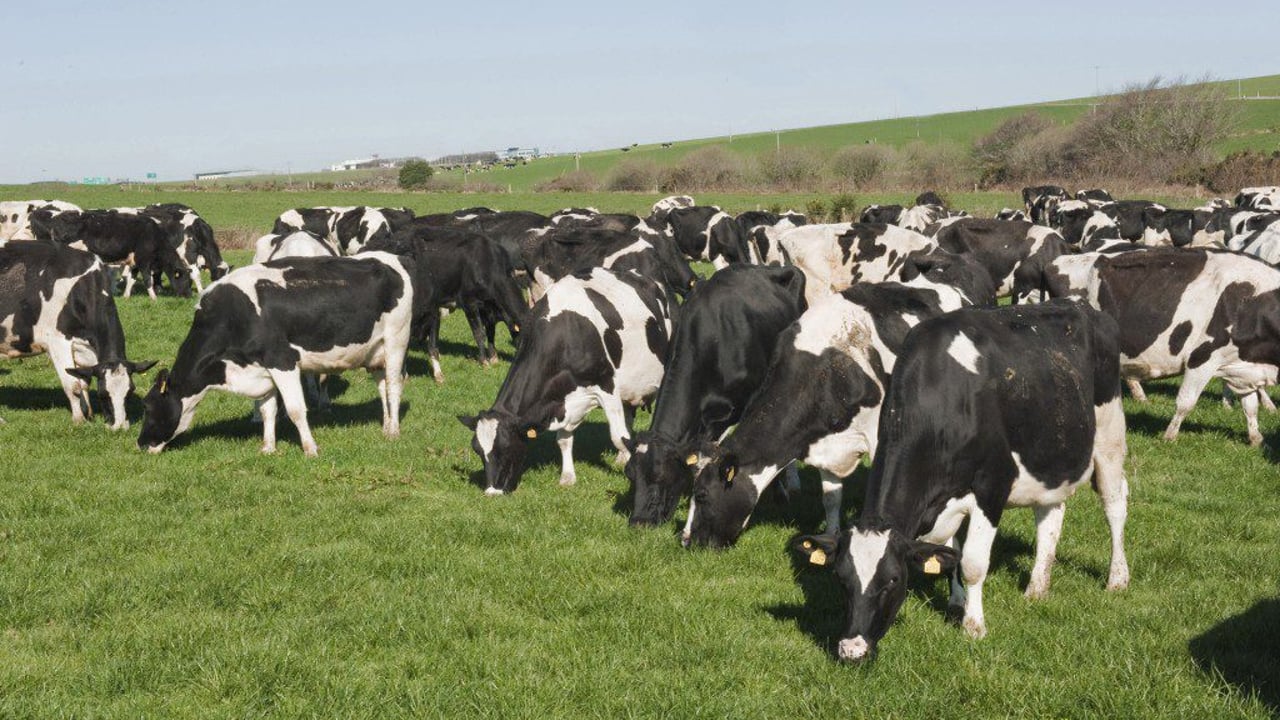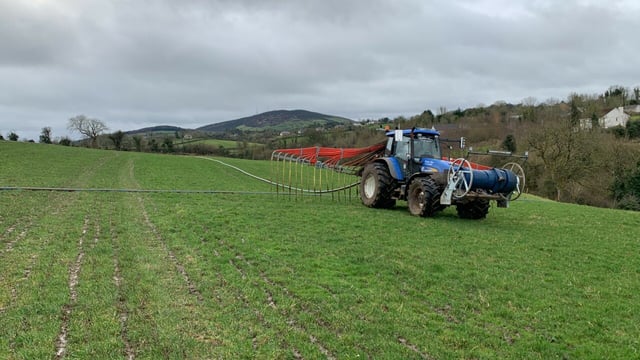When is the best time to go in with silage during spring grazing?
It's hard to believe that we are only a few weeks away from cows calving down again and getting worked up with spring grazing plans.
Although we are a few weeks away from cows going out grazing, and maybe even longer than that in some situations, it is no harm to understand when is best time to go in with silage supplementation.
The diet of dairy cows during the early lactation and in the early spring can have a significant impact on animal performance and when out at grass, in the early spring, quality can fluctuate, which has to be accounted for.
However, increasing the proportion of grazed grass in the diet has a positive effect on milk production due to the high nutritive value of spring grass.
Closing farm cover in autumn has the biggest influence on spring grass availability but periods of low grass growth and poor grazing conditions can lead to reduced grass availability which means silage supplementation is crucial to meet herd demand.
A spring rotation planner should be used to ensure grazed grass is in the diet throughout the first rotation, and silage and concentrate supplementation should be offered accordingly when grass is tight.
Any restriction on intake during early lactation will have a negative impact on animal performance and the timing and severity of grass deficits varies from one year to the next depending on spring grass availability, growth rates, conditions and grass management.
A study at Teagasc Moorepark was carried out over over a two-year period, investigating the impact of silage supplementation during the first 12 weeks of lactation on milk production.
The study investigated whether the rate and timing of silage supplementation had an effect on milk production.
A high and a low opening farm cover was established using two autumn closing strategies with the high opening farm cover began closing on September 27 and the low opening farm cover began closing on the October 11.
Cows were randomly assigned to the high grass or low grass treatment as they calved in the spring and for the first six weeks, cows on the high grass treatment were offered a high herbage allowance with a low silage supplementation.
Cows on the low grass treatment were offered a lower daily herbage allowance with a high silage supplementation.
From weeks seven to 12, cows on the high grass treatment were offered a high daily herbage allowance with no silage supplementation.
Cows on the low grass treatment were offered a lower daily herbage allowance with 3kg DM silage/cow/day.
The effect of high grass and low grass treatment on animal production during week 1-12 of lactation were as follows:
| Week 1-6 | Week 7-12 | |||
|---|---|---|---|---|
| High grass | Low grass | High grass | Low grass | |
| Daily milk yield (kg/cow/day) | 20.5 | 20.5 | 24.5 | 23.6 |
| Milk fat content (%) | 5.59 | 5.60 | 5.12 | 5.13 |
| Milk protein content (%) | 3.64 | 3.67 | 3.51 | 3,40 |
| Milk solids yield (kg/cow/day) | 1.91 | 1.92 | 2.09 | 2.01 |
| Bodyweight (kg/cow) | 495 | 499 | 492 | 485 |
These results show that during the first six weeks of the lactation either treatment had no effect on milk yield and little difference for solids and body weight.
However, the subsequent six weeks showed the benefits of having a high opening farm cover and feeding little silage supplementation as daily milk yield, solids and bodyweight improved in comparison to the treatment feeding 3kg DM silage/cow/day.
This proves that increasing the opening farm cover allows for higher daily herbage allowance which increases milk yield and milk protein content, in particular.
Higher proportions of grazed grass in the diet improves the overall quality of the diet during the early post-calving period and leads to increased animal performance.
However, silage supplementation is more often than not needed during early lactation due to unfavourable conditions or low grass availability.
Silage supplementation can be used to avoid restricting intakes or grazing ahead of allocated areas in the spring plan.
The study at Moorepark shows that the best time to go in with silage supplementation is in the first six weeks of the lactation if grass supply is inadequate to meet herd demand throughout the first rotation.
This is not always possible for many farmers where conditions and land access is restricted in early spring but it is something to consider for upcoming spring grazing period.





